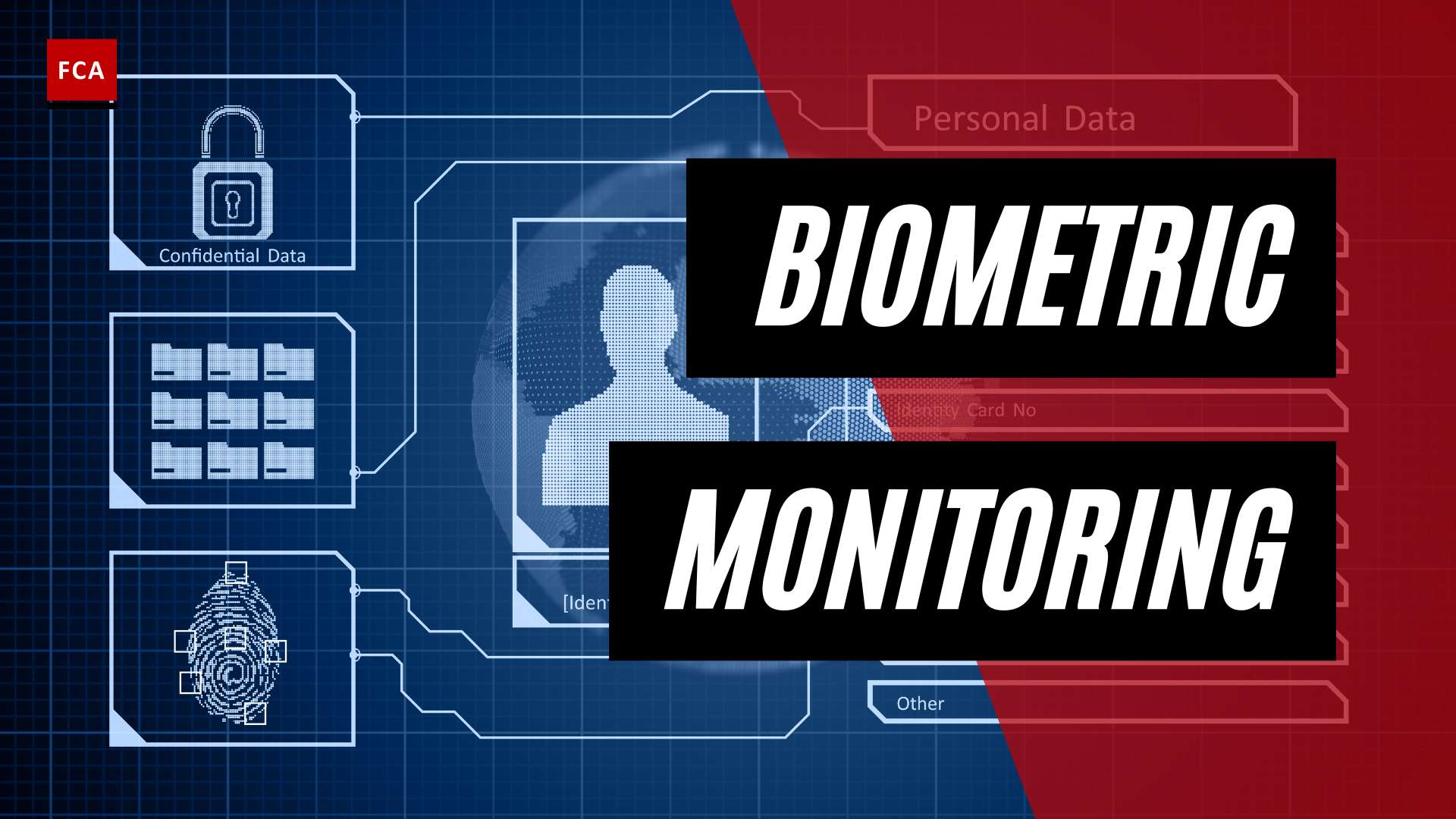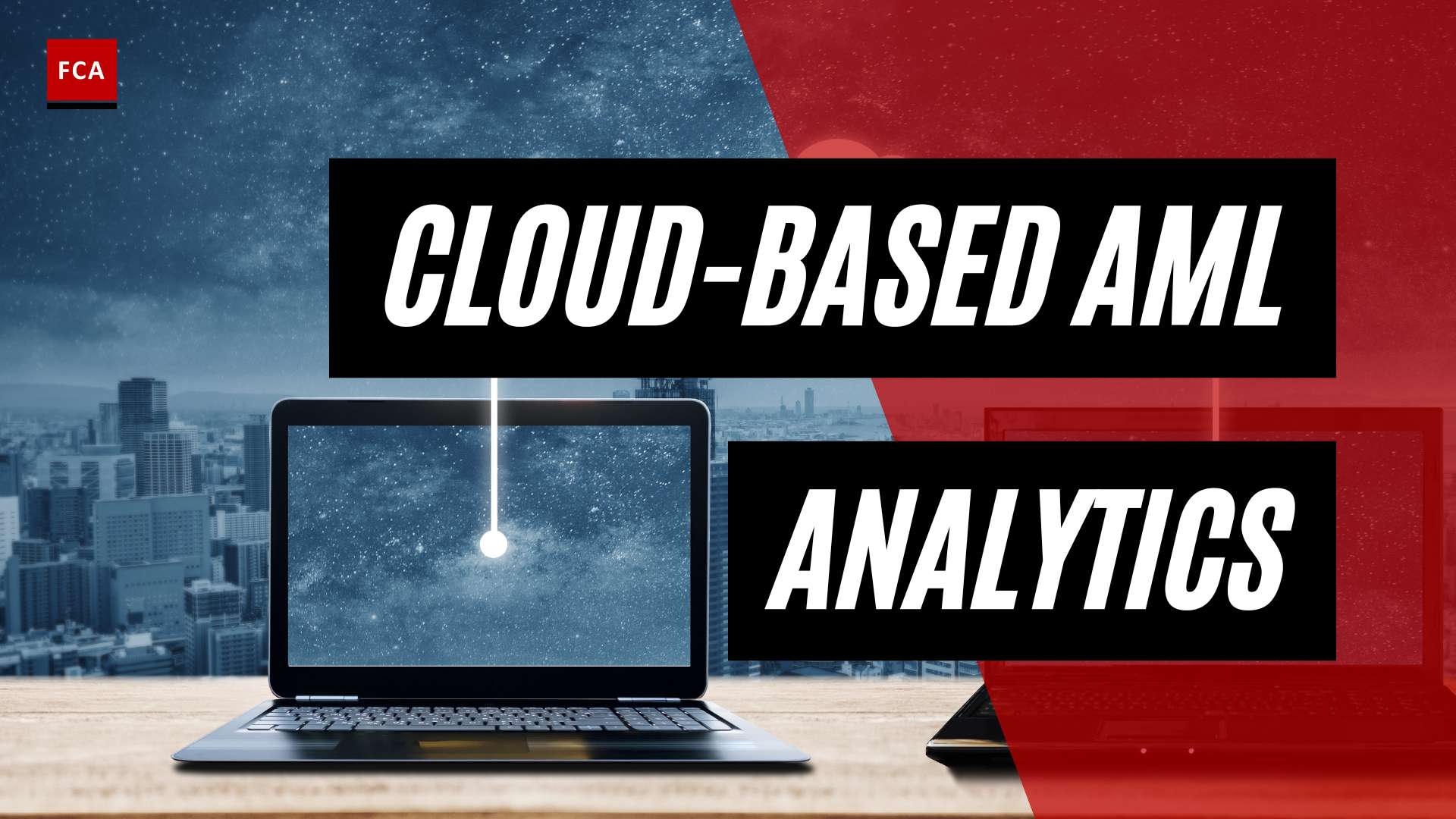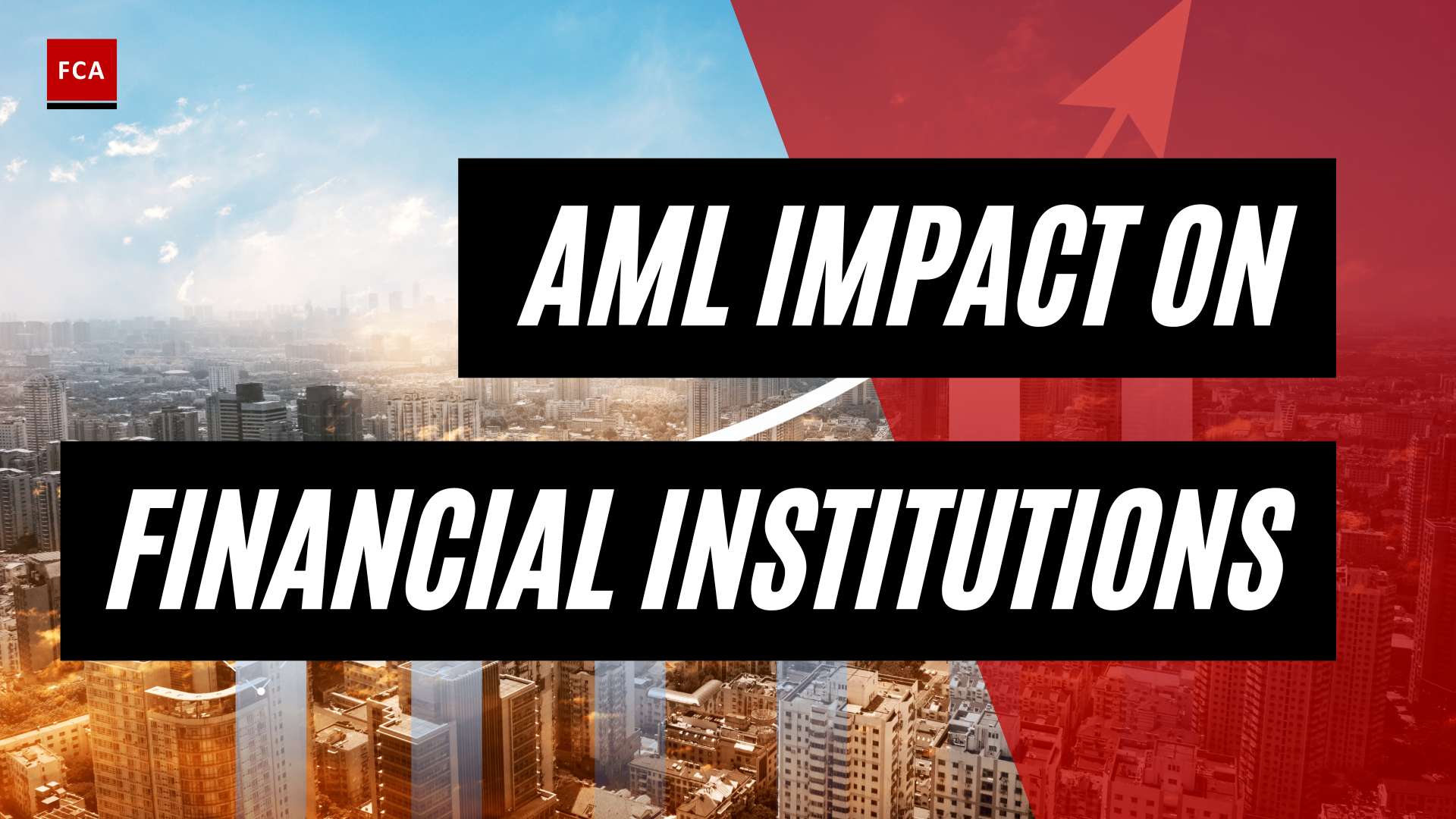AML Training for Non-Bank Financial Institutions
Non-bank financial institutions play a crucial role in the global financial system, making them attractive targets for money laundering and terrorist financing activities. To combat these risks, proper AML (Anti-Money Laundering) training is essential. AML training equips employees with the knowledge and skills necessary to identify and prevent illicit financial activities within their organizations.
Importance of AML Training
The importance of AML training for non-bank financial institutions cannot be overstated. Failure to comply with AML regulations can result in severe consequences, including hefty fines, reputational damage, and even criminal prosecutions (Financial Crime Academy). Adequate AML training is crucial for employees to understand their roles and responsibilities in identifying and reporting suspicious activities. By providing comprehensive training, organizations can create a culture of compliance and vigilance.
Proper AML training helps employees recognize and report suspicious activities, which is a vital step in preventing money laundering and terrorist financing. It enables them to understand the red flags and indicators of illicit financial transactions, allowing for prompt action and reporting to the appropriate authorities (Financial Crime Academy). A well-trained workforce is better equipped to protect the organization and its customers from the risks associated with money laundering.
Regulatory Requirements for AML Training
Non-bank financial institutions are subject to the same AML regulations as banks. However, they often face challenges in maintaining the same level of AML training and resources. It is crucial for these institutions to prioritize AML training to mitigate the risks they face and ensure compliance with regulatory requirements (NorthRow).
Regulators around the world, such as the Financial Action Task Force (FATF), require non-bank financial institutions to have robust AML training programs in place. These programs should be comprehensive, up-to-date, and tailored to the specific risks faced by each institution. They should cover topics such as the identification of suspicious activities, creating effective internal controls, and reporting obligations (Financial Crime Academy).
Organizations should ensure that AML training programs are regularly reviewed and updated to reflect changes in regulations, emerging trends, and new typologies of money laundering and terrorist financing. By staying current with regulatory requirements, non-bank financial institutions can effectively combat financial crime and protect their business and reputation.
To summarize, AML training for non-bank financial institutions is of paramount importance. It helps employees understand their role in preventing money laundering, enables the identification of suspicious activities, and ensures compliance with regulatory requirements. By investing in comprehensive and tailored AML training programs, non-bank financial institutions can strengthen their defenses against illicit financial activities and contribute to the integrity of the global financial system.
Key Components of AML Training Programs
To effectively combat money laundering and terrorist financing activities, non-bank financial institutions must establish robust AML training programs. These programs consist of several key components that ensure employees are equipped with the necessary knowledge and skills to fulfill their obligations in preventing financial crimes.
Topics Covered in AML Training
AML training programs for non-bank financial institutions should cover a range of essential topics to educate employees about money laundering risks and regulatory requirements. These topics typically include:
- Recognizing red flags of money laundering: Employees should be trained to identify suspicious activities and transactions that may indicate potential money laundering or terrorist financing.
- Customer due diligence (CDD) requirements: Training should focus on understanding the importance of conducting thorough customer due diligence, including verifying customer identities and assessing the nature of their business relationships.
- Reporting obligations: Employees should be educated on their reporting obligations, including when and how to report suspicious activities to the appropriate authorities.
- AML laws and regulations: Training should provide a comprehensive understanding of applicable AML laws and regulations, both at the national and international levels.
- Internal controls and procedures: Employees should be familiarized with the institution’s internal controls and procedures for AML compliance, including record-keeping, risk assessment, and transaction monitoring.
By covering these topics, non-bank financial institutions can ensure that their employees are well-informed and equipped to recognize and respond to potential money laundering risks.
Target Audience for AML Training
AML training is not limited to specific roles within non-bank financial institutions. All employees, including part-time, full-time, and temporary staff, should receive AML training. This inclusive approach ensures that everyone within the institution understands their responsibilities and can effectively contribute to the detection and prevention of money laundering activities.
Ongoing Evaluation and Assessment of AML Training
To maintain the effectiveness of AML training programs, non-bank financial institutions must conduct ongoing evaluations and assessments. Regular assessments help identify any gaps in knowledge or areas for improvement, allowing for necessary adjustments to the training curriculum.
Evaluation methods may include:
- Assessments and quizzes: Periodic assessments can gauge employees’ understanding of AML concepts and identify areas that require further emphasis or clarification.
- Feedback and surveys: Soliciting feedback from employees regarding the training program can provide valuable insights into its effectiveness and areas for improvement.
- Performance monitoring: Tracking the performance of employees in relation to AML compliance can help assess the practical application of training knowledge in real-world scenarios.
By continually evaluating and assessing AML training programs, non-bank financial institutions can ensure that their employees receive the most relevant and up-to-date information, enabling them to stay ahead of evolving money laundering risks.
In the next sections, we will explore the challenges faced by non-bank financial institutions in AML compliance, best practices for AML training, the consequences of non-compliance, and the future of AML compliance for these institutions.
Challenges in AML Compliance for Non-Bank Financial Institutions
Non-bank financial institutions face specific challenges when it comes to Anti-Money Laundering (AML) compliance. These challenges include a lack of resources and technology, cross-border compliance challenges, and a shortage of skilled AML professionals.
Lack of Resources and Technology
A significant challenge for non-bank financial institutions in AML compliance is the lack of resources and technology. Many institutions struggle with insufficient data on customers and transactions, hindering their ability to detect and prevent money laundering activities effectively. Without comprehensive and accurate data, it becomes challenging to identify suspicious patterns and behaviors. Additionally, limited access to advanced analytics tools further impedes the institution’s ability to analyze vast amounts of data and uncover potential money laundering risks (Sanction Scanner).
Cross-Border Compliance Challenges
Non-bank financial institutions operating across borders often face complex compliance challenges. Compliance with different AML regulations in various jurisdictions can be demanding and time-consuming. The need to adhere to multiple sets of rules and regulations adds another layer of complexity to AML programs. Moreover, the increased customer diligence requirements in different jurisdictions demand more information on customers and their beneficial owners. These cross-border compliance challenges require institutions to stay updated on the AML regulations of each jurisdiction they operate in, ensuring they meet the necessary compliance standards (Sanction Scanner).
Shortage of Skilled AML Professionals
Finding skilled AML professionals is a persistent challenge for non-bank financial institutions. The demand for qualified candidates in the AML field is high, leading to a shortage of professionals with the necessary expertise. Onboarding and training new employees in AML compliance can be expensive, and the high turnover rate in the industry further compounds the challenge. Institutions must continuously invest in training and education to keep AML professionals informed about evolving regulatory obligations and emerging money laundering risks. Overcoming the shortage of skilled professionals requires proactive recruitment strategies and ongoing efforts to retain and develop existing talent (Sanction Scanner).
In order to address these challenges, non-bank financial institutions must prioritize investments in resources, technology, and talent. By allocating adequate resources to enhance data collection capabilities and adopting advanced analytics tools, institutions can improve their ability to identify and prevent money laundering activities. Collaboration with regulatory bodies and international partners is crucial to navigate the complexities of cross-border compliance. Investing in training programs and professional development opportunities can help institutions build a skilled workforce equipped to handle evolving AML regulations and effectively combat money laundering activities.
Best Practices for AML Training in Non-Bank Financial Institutions
To ensure effective Anti-Money Laundering (AML) compliance within non-bank financial institutions, it is crucial to implement best practices for AML training. These practices help educate employees on AML regulations, enhance their understanding of money laundering risks, and promote a culture of compliance.
Tailoring AML Training to Job Functions
AML training for non-bank financial institutions should be tailored to the specific roles and responsibilities of employees, addressing risks relevant to their job functions. This targeted approach ensures that employees receive training that is directly applicable to their daily tasks and responsibilities. By focusing on job-specific AML training, employees gain a deeper understanding of the potential money laundering risks associated with their roles and are better equipped to identify and report suspicious activities. This approach also helps in aligning employees’ duties with the AML program of the institution.
Regular Updates and Refresher Training
The landscape of money laundering risks and AML regulations is constantly evolving. Therefore, regular training updates and refresher sessions are essential to keep employees up to date with the latest developments. AML training programs in non-bank financial institutions should include periodic refreshers to reinforce the knowledge gained during initial training. These refresher sessions ensure that employees stay informed about changes in AML regulations, emerging trends in money laundering, and any updates to internal AML policies and procedures. By keeping employees informed and educated, institutions can maintain a high level of AML awareness and compliance.
Assessing the Effectiveness of AML Training
Regular assessments and evaluations of AML training programs within non-bank financial institutions are necessary to ensure the effectiveness of the training. These assessments help measure the knowledge level of employees, identify any gaps in understanding, and assess the overall impact of the training on their AML compliance capabilities. By conducting assessments, institutions can identify areas for improvement and make necessary adjustments to their training programs. This ongoing evaluation and assessment process demonstrates a commitment to continuous improvement and ensures that staff members are properly educated on AML best practices and regulations.
By implementing these best practices for AML training in non-bank financial institutions, organizations can enhance their AML compliance efforts, mitigate money laundering risks, and promote a strong culture of compliance throughout the institution. It is essential for all employees, regardless of their role or position, to receive AML training to ensure a comprehensive understanding of AML requirements and to foster a collective effort in combating money laundering.
Consequences of Non-Compliance with AML Regulations
Ensuring compliance with Anti-Money Laundering (AML) regulations is of utmost importance for non-bank financial institutions. Failing to comply with these regulations can have serious consequences, including financial penalties and fines, reputational damage, and regulatory enforcement actions.
Financial Penalties and Fines
Non-compliance with AML regulations can result in significant financial penalties and fines. Financial institutions, including non-bank financial institutions, have faced substantial fines for non-compliance with AML and Know Your Customer (KYC) regulations. In the UK alone, fines totaling £38.6 million were imposed in 2020 for non-compliance with AML and KYC regulations (NorthRow). These fines serve as a deterrent and emphasize the importance of proper AML training and adherence to regulations.
Reputational Damage and Loss of Licenses
Non-compliance with AML regulations can lead to severe reputational damage for non-bank financial institutions. News of non-compliance can quickly spread, eroding trust and confidence in the institution among customers, investors, and other stakeholders. Reputational damage can result in significant financial losses, as clients may choose to take their business elsewhere.
Moreover, non-compliance may also lead to the revocation or suspension of licenses, which can have far-reaching consequences for non-bank financial institutions. Loss of licenses may result in the inability to operate legally or offer certain financial services, severely impacting the institution’s ability to conduct business.
Regulatory Enforcement Actions
Regulatory enforcement actions are another consequence of non-compliance with AML regulations. Regulatory bodies have the authority to take enforcement actions against non-bank financial institutions that fail to meet the required AML standards. These actions can include fines, sanctions, mandated remedial actions, and even legal proceedings.
Non-bank financial institutions often lack the same level of AML training and resources as traditional banks, making them vulnerable to non-compliance issues (NorthRow). It is essential for these institutions to prioritize AML training programs to mitigate the risk of regulatory enforcement actions.
To avoid these consequences, non-bank financial institutions must prioritize AML training and compliance. By implementing robust AML training programs, these institutions can ensure that their employees are equipped with the knowledge and skills required to detect and prevent money laundering activities. Regular training updates, ongoing evaluation, and compliance with AML regulations are essential for maintaining the integrity of non-bank financial institutions and safeguarding against the consequences of non-compliance.
Next, let’s explore the trends and innovations in AML compliance for non-bank financial institutions, including transaction monitoring, information-sharing systems, and real-time payment processing.
Trends and Innovations in AML Compliance for Non-Bank Financial Institutions
As the landscape of financial crime evolves, non-bank financial institutions must stay ahead of the game by adopting the latest trends and innovations in anti-money laundering (AML) compliance. Here are three key areas where trends and innovations are shaping AML compliance for non-bank financial institutions:
Transaction Monitoring and Screening
Transaction monitoring and screening play a crucial role in detecting and identifying money laundering activities. Automated transaction monitoring systems are employed to flag suspicious behavior for further investigation and reporting. These systems analyze large volumes of transactions, looking for patterns and anomalies that may indicate illicit activity (Unit21).
By leveraging artificial intelligence and machine learning algorithms, financial institutions can improve the accuracy and efficiency of their transaction monitoring processes. This enables the identification of potential money laundering activities in real-time, allowing for swift action to be taken.
Additionally, robust screening processes help ensure that non-bank financial institutions are not unwittingly facilitating transactions involving sanctioned individuals or entities. Screening involves checking customer information against watchlists and sanctions lists to identify high-risk individuals or entities that may pose a threat to the institution’s AML program.
Information-Sharing Systems and Networks
The widespread adoption of information-sharing systems and networks has become increasingly important in combating money laundering. These systems allow financial institutions to pool data and share information to identify fraud and suspicious activities across institutions. By collaborating and sharing insights, financial institutions can avoid onboarding high-risk individuals and uncover patterns of suspicious behavior that may span multiple institutions (Unit21).
These information-sharing systems enable non-bank financial institutions to benefit from collective intelligence and enhance their ability to detect and prevent money laundering activities. By leveraging shared data, institutions can stay one step ahead of sophisticated criminals who often exploit the fragmented nature of financial transactions.
Real-Time Payment Processing and AML Controls
The introduction of real-time payment services, such as FedNow’s Real Time Payments Rail expected to launch in mid-2023, brings significant changes to how non-bank financial institutions operate. With immediate access to funds, organizations adopting these systems must establish AML controls specifically designed for real-time payment processing.
Real-time payment processing requires robust AML controls to prevent fraudsters from exploiting the speed and immediacy of these transactions. Non-bank financial institutions need to implement technologies and processes that can analyze and assess the risk associated with real-time transactions in real-time itself. This ensures that suspicious activities are promptly identified and appropriate actions are taken to mitigate the risks (Unit21).
Staying informed about these trends and innovations is crucial for non-bank financial institutions to enhance their AML compliance efforts. By leveraging transaction monitoring and screening technologies, participating in information-sharing systems, and implementing real-time AML controls, institutions can strengthen their defenses against money laundering and stay one step ahead of the ever-evolving financial crime landscape.
The Role of AML Training in Combating Money Laundering
AML training plays a vital role in the fight against money laundering within non-bank financial institutions. By providing staff with the necessary knowledge and skills, AML training enables them to identify suspicious activities, create effective internal controls, and report potential money laundering incidents to the authorities.
Identifying Suspicious Activities
One of the primary objectives of AML training is to educate staff on how to recognize red flags and indicators of potential money laundering activities. Through comprehensive training programs, employees gain an understanding of the various methods and techniques used by money launderers to disguise illicit funds.
Training should cover topics such as recognizing unusual transaction patterns, identifying customers who exhibit high-risk behavior, and understanding the warning signs of potential money laundering activities. Armed with this knowledge, employees can remain vigilant and promptly report any suspicious activities they encounter.
Creating Effective Internal Controls
AML training programs emphasize the importance of establishing robust internal controls within non-bank financial institutions. These controls are designed to prevent money laundering and terrorist financing by implementing policies, procedures, and monitoring mechanisms.
During training, employees learn about the AML controls that should be in place, such as customer due diligence (CDD) procedures, transaction monitoring, and know-your-customer (KYC) requirements. They also gain an understanding of the importance of risk assessments and how to perform them effectively.
By creating and implementing effective internal controls, non-bank financial institutions can reduce the risk of being exploited by criminals seeking to launder money and protect the integrity of their operations.
Reporting to Authorities
AML training emphasizes the critical role that non-bank financial institutions play in reporting suspicious activities to the appropriate authorities. Employees are educated on the reporting obligations and procedures outlined by regulatory bodies.
Training should cover the requirements for filing suspicious activity reports (SARs), the importance of maintaining confidentiality during the reporting process, and the potential consequences of non-compliance with reporting obligations.
By ensuring that employees are knowledgeable about their reporting responsibilities, AML training empowers them to play an active role in the fight against money laundering. Reporting suspicious activities to the authorities allows law enforcement agencies to investigate and take appropriate action, contributing to the overall efforts to combat financial crime.
In summary, AML training for non-bank financial institutions is a key component in the fight against money laundering. By equipping employees with the skills to identify suspicious activities, establish effective internal controls, and report potential incidents, these institutions can play an essential role in safeguarding the global financial system from illicit financial activities.
Government Guidance and Recommendations for AML Compliance
To ensure effective anti-money laundering (AML) compliance, non-bank financial institutions can benefit from the guidance and recommendations provided by government agencies. These guidelines help clarify roles and responsibilities, emphasize the importance of proper training and resources, and highlight the need for adherence to AML regulations.
Clarifying Roles and Responsibilities
Government guidance plays a vital role in clarifying the roles and responsibilities of non-bank financial institutions in AML compliance. It provides a framework for these institutions to understand their obligations and expectations in preventing money laundering and terrorist financing. By clearly defining the responsibilities of different stakeholders, such as senior management, compliance officers, and frontline staff, the guidance ensures a coordinated approach to AML efforts. This clarity helps in establishing effective AML policies and procedures that align with regulatory requirements.
Importance of Proper Training and Resources
Government agencies stress the importance of providing proper AML training and allocating adequate resources within non-bank financial institutions. Training programs should be tailored to the specific needs of employees, covering topics such as AML controls, transaction monitoring, and reporting suspicious activities. By investing in comprehensive training, institutions can enhance the understanding of their staff regarding AML risks and enable them to fulfill their obligations effectively.
Proper allocation of resources, including technology, personnel, and support systems, is crucial for successful AML compliance. Adequate resources enable institutions to implement robust AML programs, conduct thorough AML monitoring, and maintain effective internal controls. By allocating the necessary resources, institutions can demonstrate their commitment to combating money laundering and meeting AML requirements.
Adhering to AML Regulations
Government guidance emphasizes the need for non-bank financial institutions to adhere to AML regulations. These regulations are designed to combat financial crime and protect the integrity of the financial system. By following the regulations, institutions can mitigate the risk of money laundering, terrorist financing, and other illicit activities.
Adherence to AML regulations involves implementing robust AML procedures and ensuring compliance with reporting obligations. Institutions should establish effective internal controls, conduct regular risk assessments, and maintain strong customer due diligence processes. By doing so, they not only meet regulatory requirements but also contribute to a safer financial environment.
Non-compliance with AML regulations can result in severe consequences for non-bank financial institutions. These consequences include financial penalties, reputational damage, loss of licenses, and regulatory enforcement actions (Financial Crime Academy). Therefore, it is crucial for institutions to prioritize AML compliance and align their practices with government guidance and recommendations.
By clarifying roles and responsibilities, emphasizing proper training and resources, and emphasizing adherence to AML regulations, government guidance assists non-bank financial institutions in developing robust AML compliance programs. Following these guidelines can help institutions protect themselves, their customers, and the financial system from the risks associated with money laundering and financial crime.
The Future of AML Compliance for Non-Bank Financial Institutions
As the landscape of financial crime continues to evolve, non-bank financial institutions must stay ahead of the game by adapting their Anti-Money Laundering (AML) compliance practices. The future of AML compliance for non-bank financial institutions involves addressing evolving risks and regulatory requirements, enhancing data management and standardization, and continuous training and adaptation.
Evolving Risks and Regulatory Requirements
Financial institutions globally need to develop and implement AML compliance programs to combat financial crime. Recent events have shown that institutions breaching regulations risk severe fines and reputational damage. Criminals constantly find new ways to launder money, such as using shell companies, offshore accounts, and digital currencies, making it challenging for financial institutions to trace funds. They may also employ complex transaction techniques like layering and integration to conceal the source of funds (Flagright, Sanction Scanner).
To ensure future AML compliance, non-bank financial institutions must continuously monitor emerging risks and adapt their policies, procedures, and controls accordingly. Staying abreast of regulatory updates and industry best practices is essential to mitigate the evolving threats posed by money laundering and other illicit activities.
Data Management and Standardization
Effective AML compliance requires robust data management and standardization practices. Financial institutions often face challenges related to data and technology resources, which can impede their ability to detect and prevent money laundering activities effectively. Insufficient data on customers and transactions, as well as a lack of analytics tools to identify suspicious activities, hinder the effectiveness of AML programs. To address these challenges, non-bank financial institutions should invest in advanced data analytics capabilities, enhance data quality and integrity, and leverage artificial intelligence and machine learning technologies for more accurate and efficient risk assessments (Sanction Scanner).
By adopting comprehensive data management strategies and embracing standardized AML data formats, non-bank financial institutions can improve their ability to detect and report suspicious activities. This includes implementing robust customer due diligence processes, enhancing transaction monitoring systems, and fostering information-sharing networks to facilitate collaboration and enhance overall AML effectiveness.
Continuous Training and Adaptation
In the rapidly evolving landscape of financial crime, training and education are vital for non-bank financial institutions to keep their staff well-informed and equipped with the necessary skills to combat money laundering. Continuous training programs should be tailored to specific job functions, ensuring that employees have a deep understanding of AML regulations, red flags, and reporting requirements. Regular updates and refresher training sessions are essential to keep employees up to date with the latest industry trends, regulatory changes, and emerging typologies of financial crime.
Additionally, non-bank financial institutions should prioritize ongoing evaluation and assessment of their AML training programs. This involves measuring the effectiveness of training initiatives, collecting feedback from employees, and identifying areas for improvement. By continuously adapting training programs based on feedback and emerging risks, financial institutions can enhance their AML compliance efforts and better protect themselves from money laundering threats.
To achieve a sustainable and effective AML compliance framework, non-bank financial institutions must proactively embrace the challenges of evolving risks and regulatory requirements, enhance data management and standardization capabilities, and invest in continuous training and adaptation. By staying ahead of the game, these institutions can safeguard their operations, maintain regulatory compliance, and contribute to the global fight against money laundering and financial crime.








